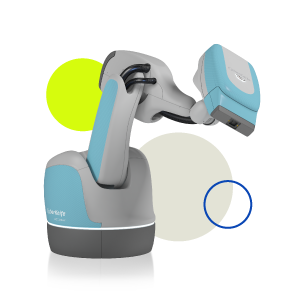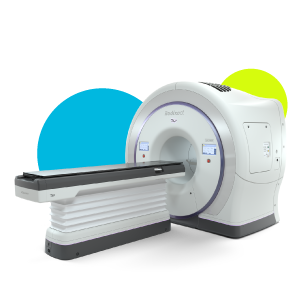CASE STUDY | RADIXACT® SYSTEM – TOTAL BODY IRRADIATION
Transition to the Radixact® System for Pediatric Total Body Irradiation (TBI) Treatment
Case Challenge:
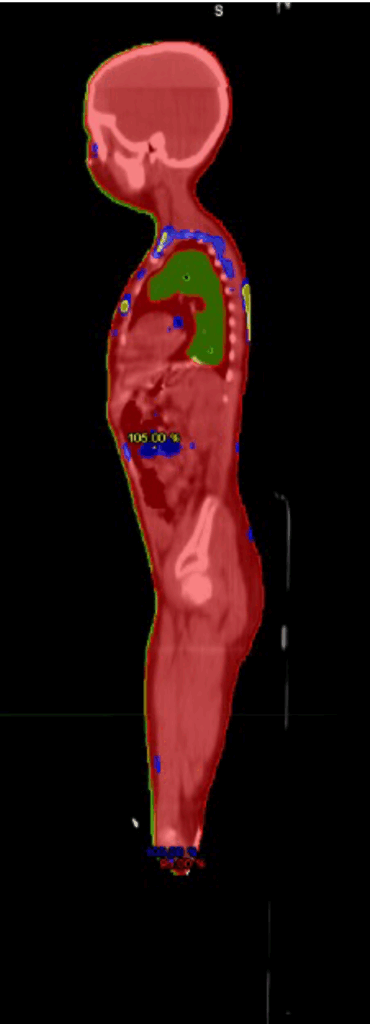
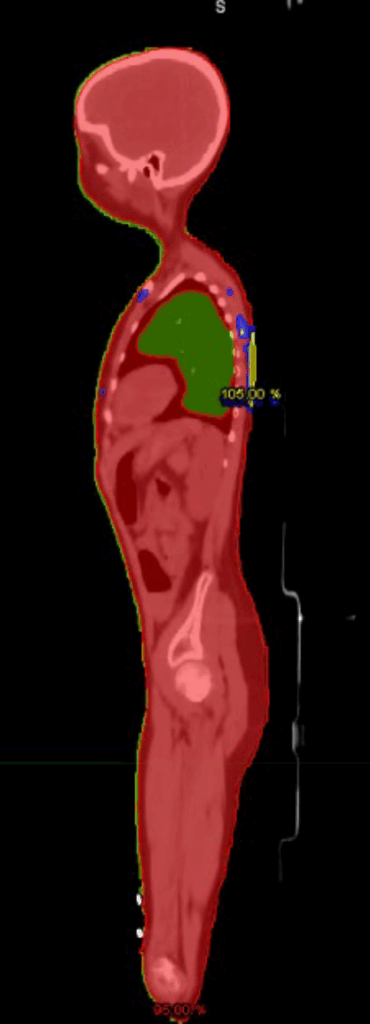
Facts at-a-glance

FACILITY NAME
LOCATION
ABOUT
TREATMENT SYSTEM EXPERIENCE
TECHNOLOGY SOLUTIONS
- VOLO® Ultra Optimizer
- PreciseART® Offline Adaptive
Radiation Therapy Option - ClearRT®
Treatment:
The patient was treated under general anesthesia with comprehensive immobilization using Medtech head curve Q2, Moldcare cushion, full body vac bag on lock board and foot stocks. Tattoos were placed anteriorly and laterally at the chest and pelvis for alignment. Helical kVCT images using ClearRT® were performed using a whole-body protocol with a field of view (FOV) of 500 mm.
The plan was created using VOLO® Ultra Optimizer in TomoDirect™ mode, with a fixed jaw and a 5 cm field. Ten fields were used to deliver a median dose of 12 Gy across six fractions, ensuring uniform dose distribution. The mean dose to the inner lungs was reduced to approximately 10.5 Gy. Special attention was given to the spleen, included as an optimization target. Robustness plans were created to evaluate the effect of a 10 mm shift in all cardinal directions. Plan assessments were performed using PreciseART® Offline Adaptive Radiation Therapy option for the first two fractions.
Outcomes:
- No grade >2 side effects observed during treatment
- Patient discharged from hospital seven weeks after
stem cell transplant
Rationale for Transitioning from Extended Source to Surface Distance (ESSD) Technique to the Radixact® System
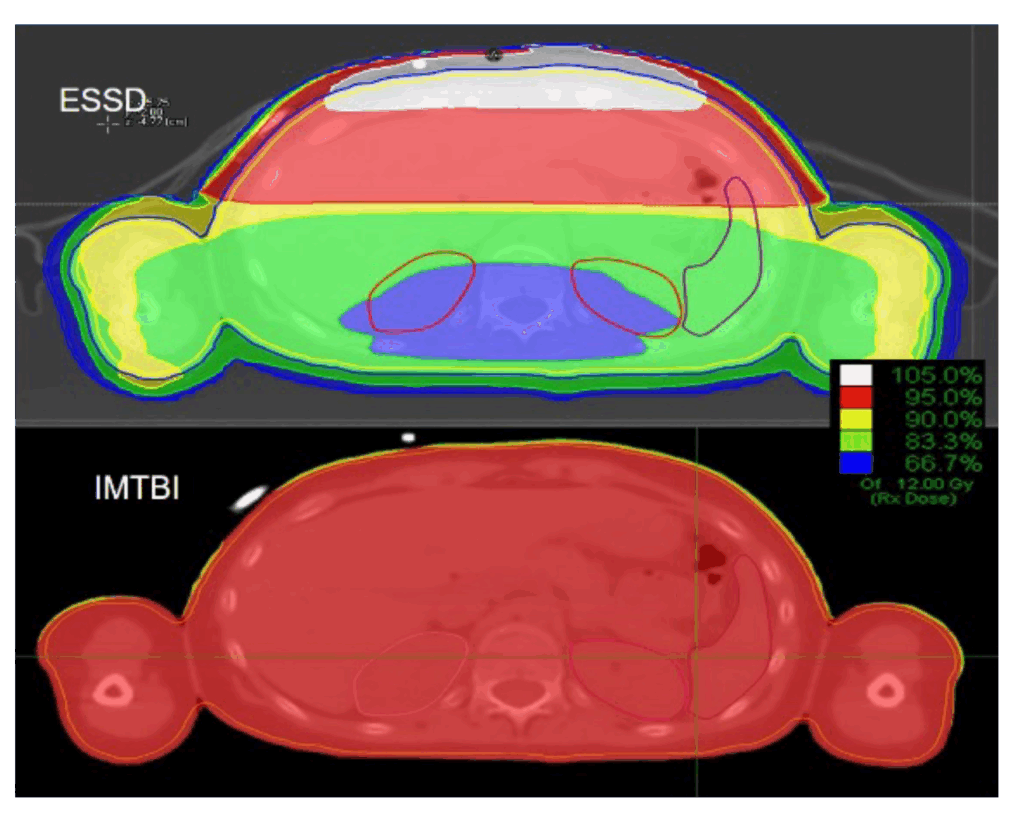

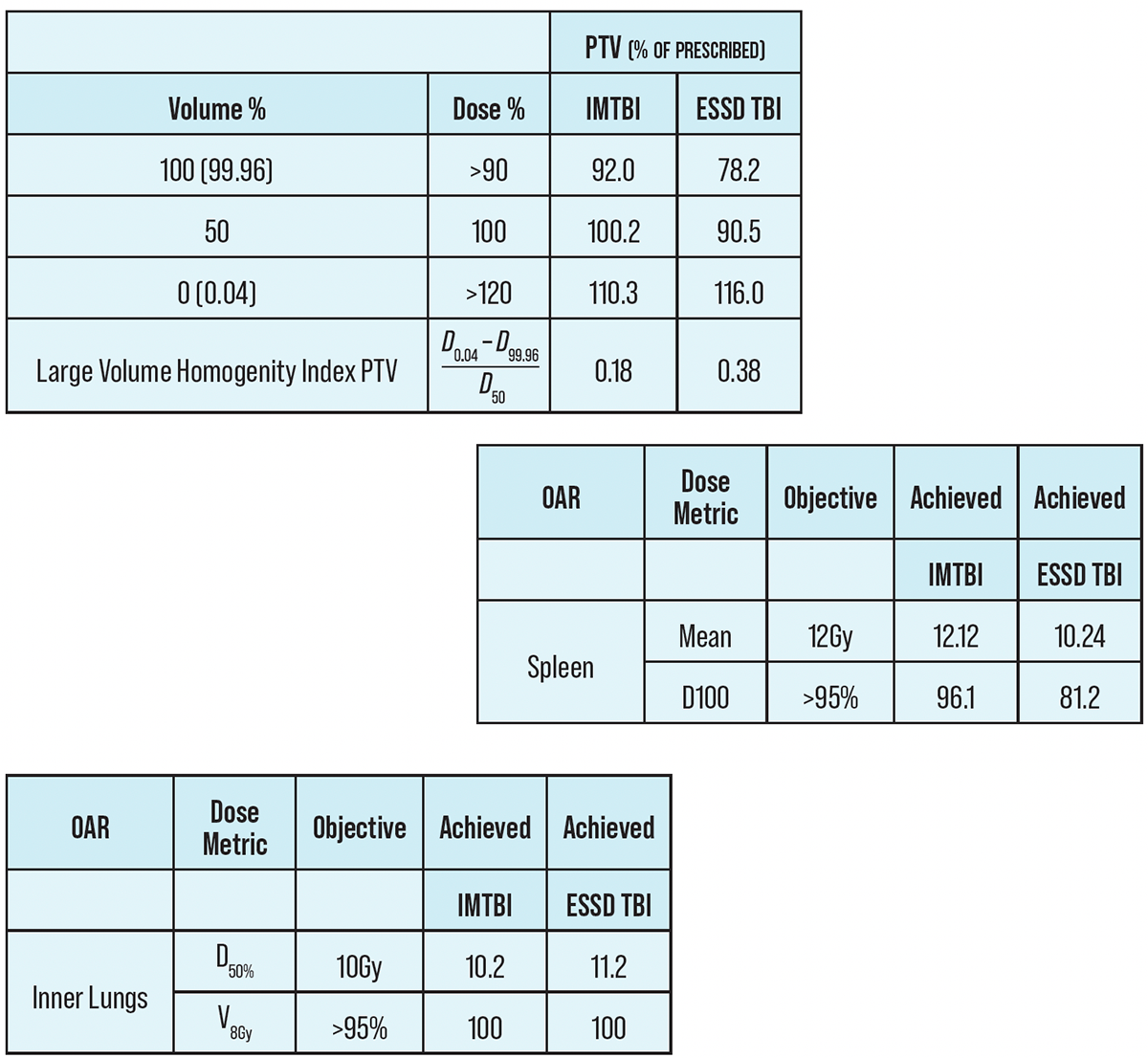
TomoTherapy® System Vs. Radixact System

Conclusion:
- Using the Radixact System, there was significant improvement in plan quality compared to the ESSD technique
- Implementing time reductions on Radixact System vs. TomoTherapy System has resulted in a more tolerable treatment experience and a decreased impact on the department workflow
- Assessments can be effectively performed using the PreciseART® Offline Adaptive Radiation Therapy software, ensuring the plan’s robustness
- Treatment was tolerated well by the patient
1https://www.cancerresearchuk.org/about-cancer/find-a-clinical-trial/a-study-looking-at-treatment-children-young-adults-with-newly-diagnosed-acute-lymphoblatic-leukaemia-alltogether1
Important Safety Information
Most side effects of radiotherapy, including radiotherapy delivered with Accuray systems, are mild and temporary, often involving fatigue, nausea, and skin irritation. Side effects can be severe, however, leading to pain, alterations in normal body functions
(for example, urinary or salivary function), deterioration of quality of life, permanent injury, and even death. Side effects can occur during or shortly after radiation treatment or in the months and years following radiation. The nature and severity of side effects depend on many factors, including the size and location of the treated tumor, the treatment technique (for example, the radiation dose), and the patient’s general medical condition, to name a few. For more details about the side effects of your radiation therapy, and to see if treatment with an Accuray product is right for you, ask your doctor. Accuray Incorporated as a medical device manufacturer cannot and does not recommend specific treatment approaches. Individual results may vary.
© 2024 Accuray Incorporated. All Rights Reserved. Accuray, the Accuray logo, and other trademarks are trademarks or registered trademarks of Accuray Incorporated and may not be used without permission. For more information on Accuray and its trademarks, please visit www.accuray.com/trademarks. MKT004730


